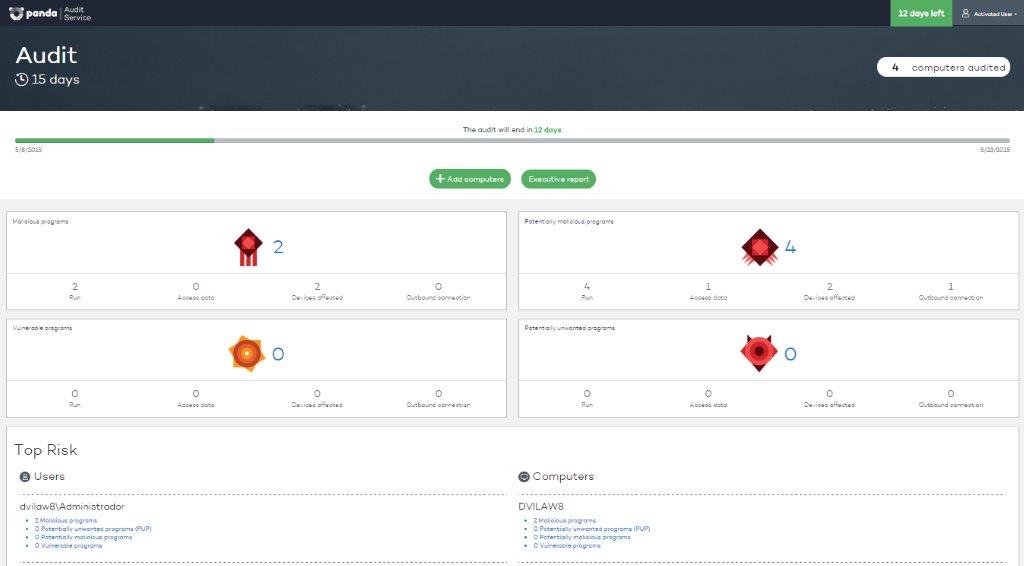Panda Security today announced the launch of Panda Audit Service, a new audit service to detect vulnerable applications, users and computers at risk, Advanced Persistent Threats (APTs) and targeted attacks. The service is deployed across the network in a matter of minutes, with no need for configuration changes, additional server infrastructure or databases to start the audit.
In short, Panda Audit Service provides real-time monitoring of all applications running on endpoints, performing analyses in cloud and Big Data environments to detect and neutralize any type of threat.

Complete visibility into all running applications
Panda Security’s new solution provides complete visibility into the applications running on the network, showing the origin and location of any running process. This way, users will know at all times who and when accesses their computers’ files and folders.
“Panda Audit Service tracks and monitors all applications running in an organization. It provides granular control and monitoring of all applications running on endpoints, ensuring customers’ security and peace of mind”, said Josu Franco, VP Business Development at Panda Security.
Additionally, Panda Audit Service generates real-time comprehensive reports on network activity, offering specific recommendations to take preventive action.
Identification of advanced threats and system vulnerabilities
Data theft has become the number one objective of targeted attacks and advanced threats to the point that any company may fall victim to a data breach. Modern-day attacks are increasingly complex and sophisticated, and in some cases traditional antivirus solutions are unable to even detect them.
“Panda Audit Service sees what others do not. It detects any attempt to access data and performs forensic analyses of the actions taken by malware. Thanks to its continuous monitoring of the network, the service detects threats and identifies system vulnerabilities immediately”, explained Franco.
The post Panda Security audits the risk level of applications and users appeared first on MediaCenter Panda Security.